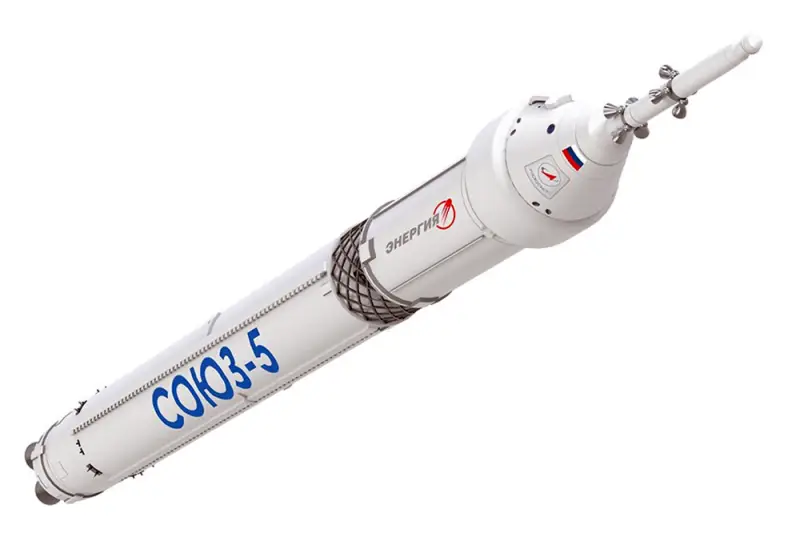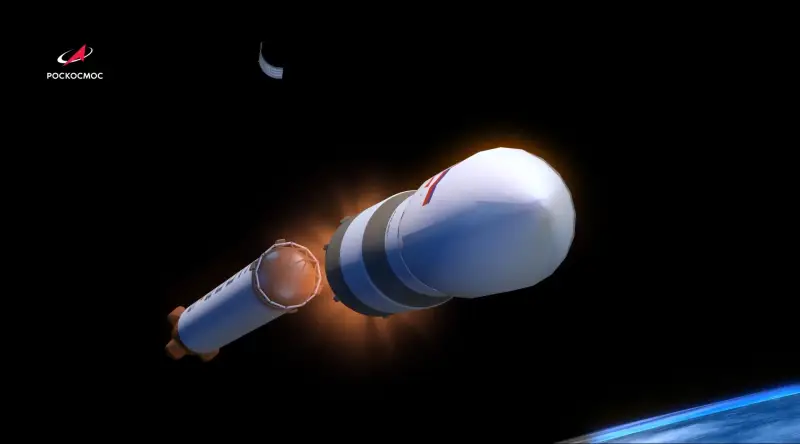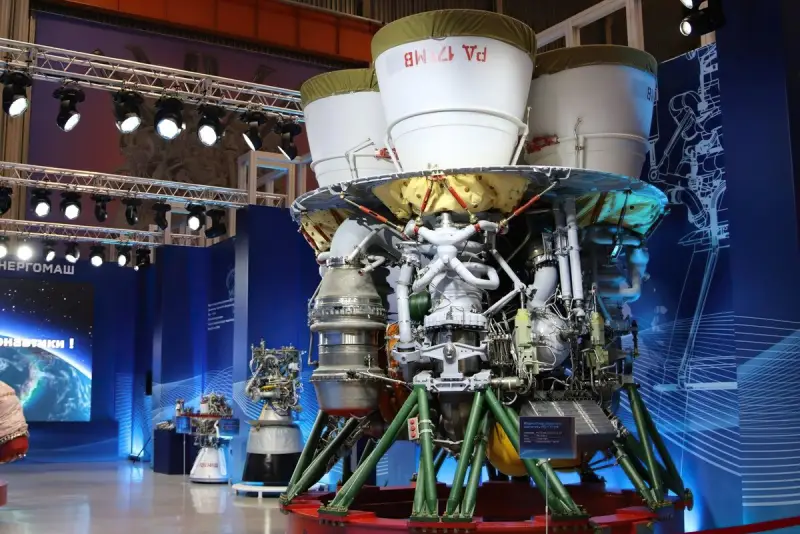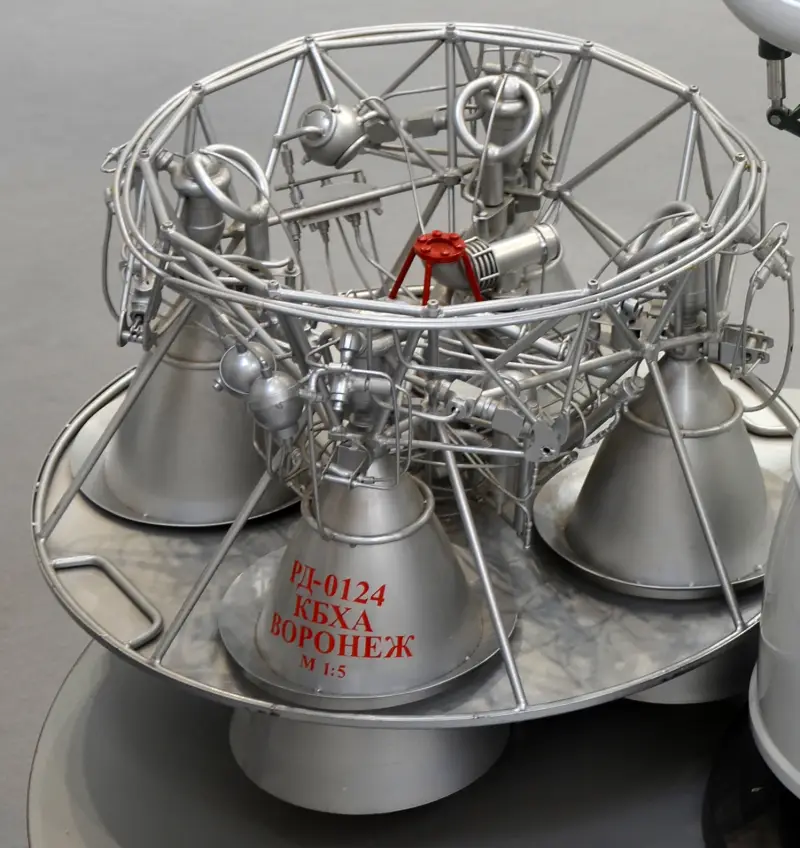Soyuz-5 launch vehicle: will we make it to the last carriage?

Launch vehicle "Soyuz-5" or "Irtysh"
Engineering delights
The Soyuz-5 program was launched in 2015 with the goal of creating a medium-class launch vehicle capable of launching into orbit 17 tons of payload. In the wide range of domestic rocket technology for space, the product occupies an intermediate position between Soyuz-2.1 and Proton-M. The first is capable of launching up to 9 tons into low Earth orbit, the second - 22,4 tons at once. The absence of an intermediate link in the missile line does not threaten anything critical, if you do not take into account the interests of business.
The cost of putting one kilogram of payload into orbit for Proton-M is just under 3 thousand dollars, but first you need to load the heavy rocket with orders for 22 tons. The situation is similar with the even heavier Angara-A5 launch vehicle, which, in addition, currently has no commercial launches at all. And they are unlikely to happen in the near future - the cost of launching one rocket is approaching $120 million. Moreover, each kilogram of payload costs five thousand dollars. The heaviest middle-class rocket in Russia is Soyuz-2.1, for which one kilogram of cargo in low Earth orbit costs from 5,5 to 7 thousand dollars. At the same time, the cost of launching the rocket itself is about $48 million, which is currently very budget-friendly.

The main task of the developers of the Soyuz-5 system was not just to get into the niche between Soyuz-2.1 and Proton-M, but also to achieve a launch cost of no more than 55-56 million dollars. To achieve this, the rocket must become the most economical among the entire Roscosmos line. First of all, due to the RD-171MV rocket engines. Last year, 2023, two more engines were assembled, the characteristics of which are unique not only for Russia, but also for the whole world.
Comparing the giant with modern rocket engines can be very conditional - the most advanced of them, Raptor and Merlin from Elon Musk’s office, live in a completely different weight category. Developed at NPO Energomash in Khimki near Moscow, the RD-171MV weighs 10,3 tons and develops 246 thousand horsepower. Most likely, this is now the most powerful power plant in the world among all types. For comparison, the projected and most powerful domestic icebreaker of the Leader class in the world is planned to be equipped with a nuclear power plant with a capacity of “only” 75 thousand horsepower. If everything goes according to plan, then one RD-171MV engine should be enough to power the first stage of the Soyuz-5 launch vehicle. A characteristic feature of the engine is four combustion chambers and, accordingly, four jet nozzles.
The thrust of the RD-171MV is estimated at 800 tons, which is 110 tons higher than that of the once most powerful American F-1. It was the engines of this series with a single combustion chamber that were installed on the Saturn 5 launch vehicle, which carried astronauts to the Moon. The developers of the RD-171MV are considering the possibility of using it to launch missions not only to the Moon, but also to Mars. The engine will be installed on the Soyuz-5 medium-class rocket, as well as on the Yenisei super-heavy rocket. The latter must finally return Russia to deep space.

RD-171MV
The RD-171MV was not developed from scratch. Like many things in domestic engineering technology, the engine has its origins in the Soviet Union. Firstly, the potential inherent in the design of the 70-80s of the last century has not yet been exhausted. Secondly, creating completely new products is now an unaffordable luxury for Roscosmos. Especially such complex ones as rocket engines. There is neither time nor funds for this. Nobody in the world practices this - everyone tries to squeeze out proven solutions to the last. The exception is Elon Musk - his Raptor and Merlon were created from scratch only due to the lack of rocket engines of this class in the United States.
The prototype for the RD-171MV was the RD-171M, developed for the Energia - Buran program. By the way, the predecessor with 230 thousand horsepower was also the most powerful rocket engine in the world of its time. But it's not just about power. You can create an engine that, in theory, will pull halfway around the world, but at the same time consume an indecent amount of fuel. To assess the energy perfection of products, rocket scientists have a specific impulse indicator, measured in seconds. To put it very simply, the larger it is, the more efficient the engine uses fuel. For the RD-171MV, the specific impulse is 311 seconds at sea level, which is a record in its class. But not absolute - as stated, the American Raptor produces 330 seconds. Much here depends not only on the perfection of the design, but also on the fuel used. For example, the main engine of the Soviet "Energia" was powered by an almost ideal fuel - hydrogen (oxidizer - oxygen), which is why the specific impulse reached 450 seconds. But the difficulties and dangers with hydrogen are clear to everyone, which is why it is not widespread in the space industry.
Killer Falcon 9 rushes into space
RD-171MV is not the only unique solution within the framework of the Soyuz-5 program or, as it is also called, Irtysh. Engines from Khimki are installed on the first stage of the launch vehicle, and RD-0124MS are provided for the second. It is interesting that the prototype was the RD-0124, created back in 1993 - it was the first rocket engine in post-Soviet Russia. The MS modification is currently at the design and testing stage of the first prototypes, but the stated parameters are encouraging. In a vacuum (the main operating environment), the product produces up to 60 tons and consumes fuel (oxygen and naphthyl) very efficiently - 334 seconds at sea level.

RD-0124MS for the second stage of Soyuz-5
They plan to install two four-chamber engines on each Soyuz-5 rocket. Tests at the Voronezh Chemical Automation Design Bureau are in full swing, but the time has not come for the production of commercial samples. It will be very good if this happens in the current 2024.
The list of innovations of the Soyuz-5 project includes the use of promising aluminum-magnesium alloy 1580 for tanks and transition compartments of the launch vehicle. Let's tell you a little about this high-strength alloy. Judging by open data from 2020, it was developed by specialists from RUSAL. Alloy 1580 is magnesium-containing with 0,1 percent scandium and 0,15 percent zirconium used as alloying additives. The technical specifications for metallurgists initially included the possibility of manufacturing launch vehicle compartments using WAAM technology, that is, 3D printing with metal wire, which uses arc welding.
As a result, Soyuz-5 developers have the opportunity to create complex structures with a unique strength-to-weight ratio from aluminum-magnesium alloy 1580. At the end of December 2023, an experimental tank from this alloy was assembled at the Progress Rocket and Space Center, and in the near future it will be dynamically tested at the Central Research Institute of Mechanical Engineering. We are talking about the first stage tank for the oxidizer - oxygen. The fuel tank, naphtha, was created even earlier and has already been fully tested. At the second stage, engineers were the first in the industry to use a combined bottom of the fuel and oxidizer tanks, which reduced the final weight and size of the product. Using aluminum-magnesium alloy 1580 is much cheaper than aluminum-lithium from SpaceX for Falcon 9 launch vehicles. However, domestic products made from alloy 1580 are larger and heavier than those produced by Elon Musk’s office.
A non-trivial engineering solution seems to be the use of welding parts of tanks using the friction stir method. The technology makes it possible not to melt the welded surfaces to a liquid state, which is why there are practically no weld defects after cooling. All equipment for such a delicate engineering process was developed at the domestic JSC Cheboksary Enterprise Sespel.
The main advantage of the Soyuz-5 launch vehicle is the greater mass of payload delivered into orbit than that of its main competitor, the Falcon 9. According to calculations, by about 10-15 percent. At the same time, the cost of launching the rocket should remain the same - 55-56 million dollars, which is lower than the Falcon 9 with its 62 million, even in the version with a returnable first stage. By the way, within the framework of the Soyuz-5 topic, the authors are considering the possibility of returning the first stage to Earth and reusing it. There are no problems with engines in this sense - they are initially reusable. They plan to carry out a soft descent using parachutes. If everything goes according to plan, then Russia could take over some of SpaceX’s customers, especially from friendly countries. For example, private developers from India and China may well use the services of Soyuz-5. Given the continued growth of traffic into near space, cost-effective launch vehicles will not remain idle in any case.
At the end there is a little bit of tar in the ointment. At the beginning of 2024, the developers are planning the first launch of the finished Soyuz-5 rocket on December 24, 2025. If you look at the archives for 2017-2019, the commercial operation of the new system should have started last year. Launch dates are constantly being delayed and, to a certain extent, this is justified. The main thing is that this does not become a permanent process.
Information